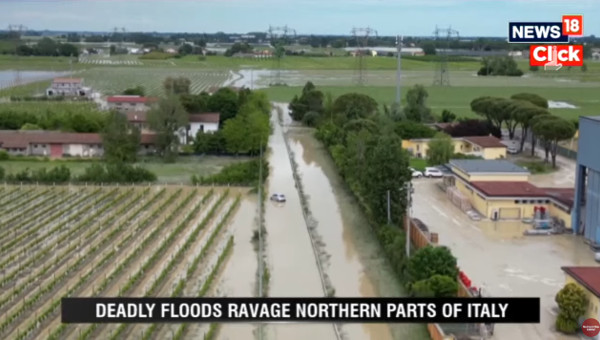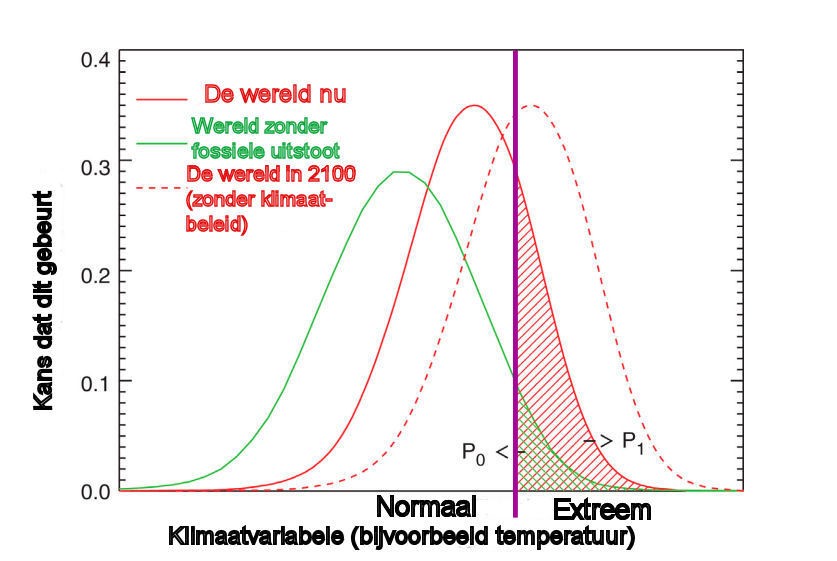
The climate will not be affected by warming. And it doesn’t budge either.
For now, we can assume that computers at KNMI and other climate centers are stamping 24 hours a day on this week’s floods in northern Italy, or rather on the heavy rainfall that caused these floods. Was this just severe weather? Or can we attribute this to climate change?
KNMI scientist Gert Jan van Oldenburg, who died in 2021, was the driving force behind the Refer the weather in the world (WWA), an international group of researchers who quickly calculated current aspects of the climate using a whole series of climate models and supercomputers.
The WWA is now a well-stocked machine that, within a few weeks after an extreme weather phenomenon, issues an opinion on what a changing climate has to do with it. For the record: The WWA has sometimes already ruled that floods, heatwaves, or droughts have nothing to do with climate change—or they’ve exonerated climate for lack of evidence.
‘Impossible without climate change’
However, I wouldn’t be surprised if the WWA put these Italian floods firmly on account of climate change in a while — I can already dream about the headlines. One of the features of the excitement that overwhelms journalists and activists is that they do not (want to) understand the significance of such a statement.
For example, the WWA might judge that this much rainfall is ten or a hundred times greater than the climate we have today, compared to a hypothetical climate with no human emissions of “fossil” greenhouse gases. It has even happened that climatologists have called an extreme weather event “impossible without climate change.”
Suppose that, too, is the judgment of these Italian floods. So the general perception is that without climate change there would have been no flooding at all in northern Italy this spring. This fits with the prevailing narrative that there is not just climate change, but climate crisis, climate devastation, and climate collapse.
The environmental movement fanatically fuels this usage, and the University of Amsterdam is now joining the craze by making terms like “climate emergency” mandatory for staff and students when it comes to climate change.
Those who dig a little deeper into how the WWA arrived at its rulings will understand how illogical those terms are. In fact, such an unconditional attribution only means that without climate change the floods would also have occurred, but a little less often. Sensational reports about an exceptional 47-degree heat wave made hundreds of times more likely by climate change easily create the false perception that the climate is now completely out of control.
Optical error and illusion
What’s the real deal: That 47-degree heat wave is now as rare as a 44- or 45-degree heat wave in a not-so-warm climate. 44-degree heat waves are less rare now, but they are still as rare as 42-degree heat waves in non-fossil climates. and so on.
The exponential increase in the chance of severe weather due to a relatively low temperature rise — 1.2 degrees — is statistically real, but in a sense it is an optical illusion. To see this, we need to zoom in on the technical details. We take temperature as an example below, but the same applies to other weather phenomena, such as droughts, rains, and storms.
For those who only follow the climate through the media, it will be hard to believe, but because the climate and temperatures are changing relative to the mean No or hardly more extreme.
The probability distribution hardly changes shape
If you make a graph of how often a certain temperature occurs in a place, you get a probability distribution like the red line in the image below: The average temperature occurs most often – that’s the peak in the curve – and for both the cold and the hot side Warm, stragglers are becoming increasingly rare. The red curve is the current climate that is already warming; The green curve is a hypothetical climate 1.2 degrees cooler if we had never started burning coal, oil and gas.
The gist is this: due to global warming, the entire probability distribution shifts slightly to the right, but hardly changes shape. If there is already Climate collapse – the favorite wake-up call of the international press – then this probability distribution will change beyond recognition, but this is not how the greenhouse effect affects the climate at only a few degrees of warming.
Now, if you have a hard limit on what constitutes a temperature extreme – say 30 degrees, the violet line on the graph – the green shaded area indicates how often you are warmer than 30 degrees in a cold climate, and the red shaded area how many times it is Warmer than 30 degrees in the current warm climate. In the photo, this actually results in an “extreme” temperature 3-4 times as often.

In fact, the “optical zoom” of the possibility of severe weather is much stronger. Keeping it visually manageable, the shifts between the three probability distributions appear unrealistic in the image above, with a warming of about ten degrees, while the actual climate warming is currently only 1.2 degrees.
Excitement on rare outliers
The border between “normal” and “extreme” was also chosen very moderately. After all, the red shaded region apparently comprises a quarter of the red probability distribution, so it is now ‘extremely hot’ a quarter of the time in this image, and in a non-fossil climate it is 3 to 4 times rarer (the green shaded region) .
In fact, the media excitement is almost always about the rarest outliers, eg, only occurring 1/1000th of the time. So you have to imagine that the purple line is much further to the right, say over the second e in “far”. The areas shaded green and red will become much smaller, but their proportion will become unbalanced: with such a limit of extreme weather this might happen ten times more often in the present climate than in the non-fossil climate.
are you still there? In short: the more extreme the weather, the more likely it is to occur with relatively little warming of the climate. This does not mean at all that the climate has “collapsed” or words to that effect. The climate continues to function as it always has, but at a slightly higher average temperature. This amazing probability reproduction of extreme weather is a consequence of how we define extreme weather and how temperature and other weather properties behave statistically.
We strive for the perfect blend of mitigation and conditioning
This simple image also symbolically illustrates something else: the tension between mitigation and adaptation. Mitigation is the prevention of climate change by reducing global greenhouse gas emissions. Adaptation is taking measures to mitigate the consequences of climate change, for example by raising dams. In this case, the purple line indicates the maximum water level that a country’s marine dams can handle.
mitigation attempts to slow and stop shifting the entire probability distribution to the right; Adaptation shifts the purple bar to the right along with the probability distribution. Neither of these options is ideal, the optimal mix is somewhere in between, depending in part on local conditions. But where is this optimal? This is what any reasonable discussion of climate change should be about.
Science journalist Arnold Jaspers He is the author of the bestselling book Nitrogen trap. His columns appear every Saturday in Wynia week.
In the month of June 2023 He goes Arnout Jaspers on tour through the Netherlands Along halls, events, clubs and libraries. Look elsewhere in Wynia Week where exactly that is! The organizers can send a report to [email protected]
Winya weekIt appears 104 times a year with independent, required reports made freely available to all. Donors make that possible. are you with us Thank you!

“Pop culture enthusiast. Unable to type with boxing gloves on. Analyst. Student. Explorer.”
